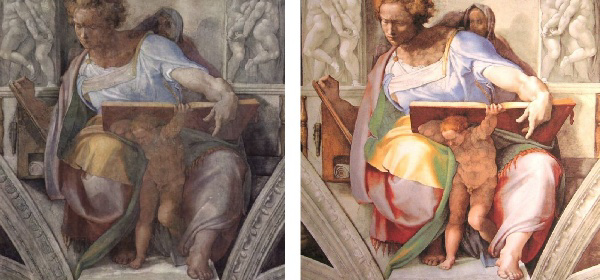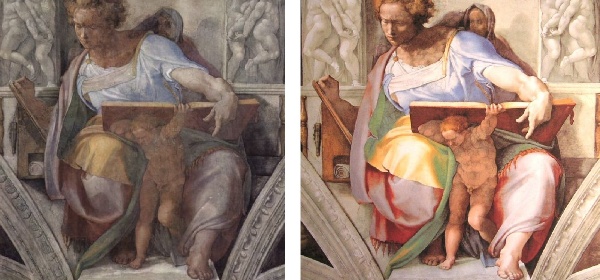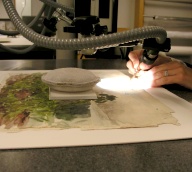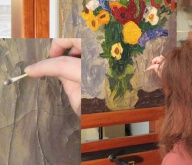"Hello, I Need My Painting Cleaned..."
Recently, I answered two calls at the Gallery about how to clean a painting. One is suffering from soot damage, and the other has a nice layer of tar on its surface from years in an old theater office before smoking at work was a no-no. We get a lot of questions about how to find an art appraiser, but not as many for restoration and conservation, and I discovered some valuable resources in the area.
First, there's Bob Swain, owner of Beauchamp's Gallery & Frame Shop here in Topeka. Rumor had it that he did restoration work, but it wasn't until we spoke on the phone that I understood how much his shop actually does. They clean and repair paintings, including doing some recent work for the Kansas State Historical Society. It's important to note that he's a restorer not a conservator, however he follows industry standards and best practices for reversible conservation. He's a wonderful local resource who will help you himself or, if necessary, will redirect you to someone if the repair work falls outside his skill set.
What's the difference?
A fine art restorer will repair the appearance of the work—fixing a tear, retouching the paint, rejoining a frame. This is the oldest way to fix things, dating back to the beginnings of art itself, when artisans with training and experience fixed each others' work. This can be done with care and precision, but doesn't necessarily ensure the survival of a work.
A fine art conservator thinks about the appearance of the work as well, but they approach the repair using science, art historical research and artistic requirements of the work. For example, rather than beautifully filling in bare spots in a painting with a quality oil paint from Hobby Lobby, a conservator would research the chemical structure of the paint used by Michelangelo in the 16th century and attempt to re-create the exact formula. He or she would also use their extensive art history background (usually a specialty) to research Michelangelo's brush technique and style in hopes of applying the paint as closely as he might have were he restoring the work himself.
When might you pick one over the other?
For starters, cost. You need to ask yourself if the artwork that needs fixing is something you simply want to improve upon appearance-wise so it looks better or more in tact when displayed, or if it needs to be preserved for all of history. I might take a damaged painting I did in college to a fabulous, quality restorer. If I found a dirty, but original Andrew Wyeth at an estate sale, I'd call a reputable conservator. But that is up to the individual to decide. Your grandmother's sampler might be valuable enough to you to call a conservator.
Conservators in the Kansas City area
There are certainly more out there, but these are the three I recently "discovered". Sutton Greene Art Conservation, LLC has a "case studies" section on their website showing before and after pictures, as well as the challenges each piece presented before work was started. Van Witt Fine Art Conservation, LLC has a tab on their website menu for "examples: before & after" that walks you through the fixin', too.
There's a third place I found—Heugh-Edmonson Conservation Services, LLC—that specializes in paper and photography conservation. Their website is under construction, but should you need them, Tom Edmonson's e-mail is tom@heugh-edmondson.com.
Conservators outside Kansas
The American Institute for Conservation of Historic and Artistic Works (I know, it's a mouthful), is an absolutely invaluable resource. They have so much going on and available on their website, but what I love most is how they've set things up to make finding the conservator that's right for you super easy. Also, the good old Smithsonian has the Museum Conservation Institute. The webpage is vast and full of wonderful specifics about how to care for your art as well as extensive resources for conservation issues.
If you have artwork that needs attention and you don't know where to begin, we're here to help find resources. Call us anytime at the Gallery: 785-580-4515, or email us here.















